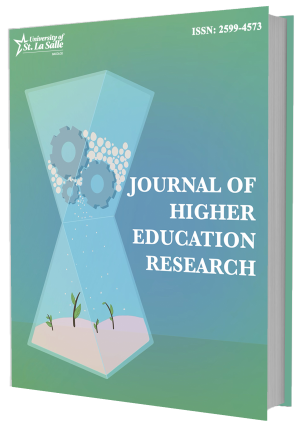Hand Hygiene: Knowledge, Beliefs, and Practices Among Nursing Students During the COVID-19 Pandemic
https://doi.org/10.70228/YJHER2024026
Cite this article Read this article
ABSTRACT
Proper hand hygiene is essential for preventing illnesses associated with providing healthcare, but following international guidelines can be complex. This study aimed to determine the current status of hand hygiene knowledge, beliefs, and practices among nursing students during the COVID-19 pandemic and clarify the factors influencing hand hygiene knowledge, beliefs, and practices. The profiles questionnaire, which was formed from the literature review, and the Chinese version of the hand hygiene questionnaire, were used to conduct the survey. Two hundred nursing students were included as participants. The results showed that the score of hand hygiene knowledge of nursing students was 6.43±1.66 (the total score is 10), the score of hand hygiene belief was 71.70±8.10 (the total score is 95), the score of hand hygiene practice was 66.65±6.94 (the total score is 70), and the hand hygiene practice adherence rate was 95.22%. These results revealed that nursing students' knowledge, attitude and practice of hand hygiene need to be improved. Statistical analysis illustrated that nursing students’ profiles impact their hand hygiene knowledge, beliefs, and practices. The researchers can formulate targeted health promotion strategies based on the profile of nursing students and internal and external environmental factors to improve nursing students' hand hygiene knowledge, beliefs, and behaviors. Interventions to improve hand hygiene adherence in healthcare workers are needed to reduce infections.
Keywords: nursing students, hand hygiene, knowledge, beliefs, practices, COVID-19 pandemic

Volume 11 Issue 1, 2023 EDITION
Published 2023
Editor's Note
Dear Readers, I am delighted to share with you the Volume 11, Issue 1 (2023) of the Journal of Higher Education Research. This issue showcases a compelling collection of studies that address critical topics in nursing education and healthcare, each offering meaningful insights that contribute to advancing both practice and policy. The integration of clinical nursing specialties into curricula is explored in a study by Tan and Chua, emphasizing the importance of aligning education with the demands of modern healthcare. Similarly, Jin and Young study the factors influencing risk cognition among nursing students, highlighting the need for targeted interventions to enhance clinical performance and understanding nursing risk management. The challenges brought by the COVID-19 pandemic are reflected in the work of Qiao and Diva, who investigate the knowledge, beliefs, and practices surrounding hand hygiene among nursing students. Their findings emphasize the importance of reinforcing hygiene practices to maintain healthcare standards during global crises. Meanwhile, the works of Ying and Chua on inter-arm blood pressure differences provides critical insights into prevalence of hypertension and related factors in different groups. In the realm of psychosocial health, Liu and Espinosa examine dyadic coping, perceived stress, and marital adjustment among female cancer patients and their spouses. Their findings shed light on the interplay between personal health and relational dynamics, offering valuable perspectives for psychosocial interventions. Equally compelling is the work of Song and Trajera, which captures the lived experiences of patients undergoing organ transplantation, providing a profound understanding of their challenges and the support they require. Other studies in this issue focus on empowering patients through self-management and improved care pathways. Luo and Trajera document the experiences of elderly patients with colorectal cancer, emphasizing the significance of autonomy in enhancing quality of life. Meng and Trajera, on the other hand, explore the care needs of glioma patients during hospitalization, offering insights into improving symptom management and survivorship care. Lastly, Liu and Cadena investigate discharge readiness and the quality of discharge teaching among diabetic patients, highlighting the level of correlation in terms of discharge readiness and influencing factors for discharge management plan. This collection of studies reflects the diverse and evolving landscape of nursing education and healthcare research. We extend our heartfelt thanks to the authors, reviewers, and the editorial team for their dedication and contributions. It is our hope that these studies inspire new ideas and inform practices that will shape the future of higher education and healthcare. Enjoy your learning through the current issue. Sincerely, JOVAL N. MARTINEZ Editor-in-Chief


